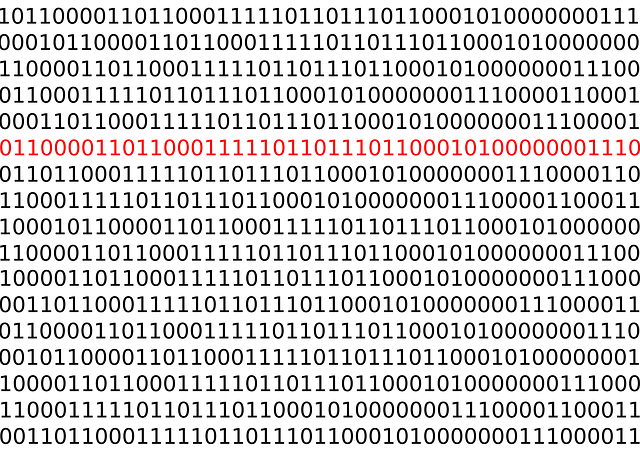The FAQ JSON-LD Code uses structured data (JSON-LD) to organize FAQs hierarchically with `question`, `answer`, and `acceptedAnswer` properties. It involves wrapping content in `<script>` tags for dynamic, expandable FAQs. Techniques like AccordionSchemaSEO maximize SERP space with rich FAQ snippets. Implementing this schema boosts user experience, SEO, and search result visibility, increasing clicks, reducing bounce rates, and potentially elevating session durations and conversion rates.
Adding the FAQPage schema to your website’s content is a strategic move that boosts user engagement and SEO. By implementing this schema, you enable search engines to understand and display your content in rich FAQ results, occupying valuable real estate on search engine result pages (SERPs). This article guides you through the process of integrating the FAQ JSON-LD Code, explaining its structure, benefits, and a step-by-step implementation process. Discover how to optimize your FAQ page for enhanced user experience and improved search visibility.
- Understanding FAQ JSON-LD Code Structure
- Why Add FAQPage Schema to Your Content?
- Enhancing User Experience with Rich FAQ Results
- Boosting SEO Through Improved SERP Real Estate
- Implementing FAQSchema: Step-by-Step Guide
- Measuring Success and Optimizing Your FAQ Page
Understanding FAQ JSON-LD Code Structure

The FAQ JSON-LD Code is a structured data format that empowers search engines to understand and display frequently asked questions (FAQs) in an enhanced, interactive manner. This code follows a specific schema, utilizing JavaScript Object Notation (JSON-LD), to organize FAQs into a hierarchical structure. At its core, the schema includes properties like `question`, `answer`, and `acceptedAnswer` to encapsulate each FAQ’s content.
Implementing this code involves wrapping your FAQ content within “ tags, ensuring each question-answer pair is represented as a distinct item within an array. For instance, the `AccordionSchemaSEO` technique leverages this structure to create dynamic, expandable FAQs that improve user engagement by offering intuitive navigation through a series of questions and detailed answers, thus maximizing your site’s SERP real estate with rich FAQ results.
Why Add FAQPage Schema to Your Content?

Adding the FAQPage schema to your content is a strategic move that enhances user experience and search engine optimization (SEO). This schema, represented by the FAQ JSON-LD Code, plays a crucial role in helping search engines understand and display your content effectively. By implementing this structure, you’re essentially telling search engines, “Here’s how to present my information for better comprehension.”
The primary benefit lies in securing rich FAQ results on search engine result pages (SERPs). These enhanced snippets provide direct answers to user queries, increasing the likelihood of clicks and reducing bounce rates. Moreover, it encourages users to engage with your content, fostering a positive experience that might lead to longer session durations and higher conversion rates. This simple yet powerful optimization technique allows you to take control of how your website appears in search results, making it a valuable tool for any digital marketing strategy.
Enhancing User Experience with Rich FAQ Results

Implementing the FAQPage schema is a powerful strategy to elevate user experience and search engine optimization (SEO). By integrating this structured data, websites can present information in an engaging, interactive format, directly addressing user queries. When users search for specific answers, rich FAQ results offer a dynamic alternative to traditional lists or pages, providing immediate access to relevant content.
The FAQ JSON-LD Code plays a pivotal role in conveying this structured data to search engines. It allows search algorithms to understand and interpret the relationships between questions and answers, enhancing the overall presentation of information. Consequently, websites with optimized FAQ schemas stand out in search results, attracting more clicks and potentially increasing user engagement by offering valuable insights right from the SERP (Search Engine Results Page).
Boosting SEO Through Improved SERP Real Estate

Adding an FAQPage schema to your content is a powerful strategy to boost your website’s visibility and user engagement. By implementing this structured data format, you’re essentially giving search engines a clear understanding of the frequently asked questions and their corresponding answers on your page. This simple yet effective technique unlocks significant advantages in terms of SEO and SERP performance.
When search engines crawl through content marked with FAQ JSON-LD Code, they can extract crucial information, enhancing the way questions and answers are displayed in rich FAQ results. This not only makes your website more interactive for users but also increases its potential to secure a larger piece of the screen real estate on search engine result pages (SERPs). With improved SERP real estate, you capture more user attention, potentially driving higher click-through rates and reducing bounce rates. Additionally, Accordion Schema SEO and FAQ Snippet Optimization techniques, when combined with this structured data, can further revolutionize how your content is presented, providing a better user experience that encourages deeper engagement.
Implementing FAQSchema: Step-by-Step Guide

Implementing FAQSchema involves a structured approach to enhance your content’s visibility and user interaction. Here’s a step-by-step guide to get you started:
1. Identify Frequently Asked Questions: Begin by compiling a list of questions that your target audience often asks. These should cover various aspects of your product, service, or topic. Organize them in categories for better comprehension.
2. Create FAQ JSON-LD Code: Structure your data using the FAQ JSON-LD schema format. This involves creating a JSON object with an array of `itemListElement` objects, each containing a `question` and `answer`. Ensure your code is valid by utilizing online tools or getting assistance from developers to avoid errors.
3. Integrate into Content: Embed the generated JSON code within your webpage’s HTML, typically in the “ section for optimal rendering. Position the FAQ section prominently on the page, often below the main content or as a stand-alone dedicated FAQ area.
4. Style with Accordion Schema SEO: Enhance visual appeal and usability by using an accordion-style layout for your FAQ. This allows users to expand and collapse questions, making navigation intuitive. Many CSS frameworks offer pre-built accordions, simplifying the design process.
5. Optimize for Rich FAQ Results: To showcase your schema effectively, claim rich snippets in search engine result pages (SERPs) by registering your structured data with search engines like Google. This can lead to enhanced display, including question excerpts and direct answers, thus increasing click-through rates.
Measuring Success and Optimizing Your FAQ Page

Measuring success is a crucial step after implementing an FAQPage schema. By utilizing tools like Google Search Console and analytics platforms, you can track key performance indicators (KPIs) to optimize your page effectively. Monitor user interactions, click-through rates from SERPs, and time spent on the page to gauge engagement. The FAQ JSON-LD Code acts as a bridge between your content and search engines, ensuring your rich FAQ results stand out in the crowd.
Regularly review these metrics to identify areas for improvement. Refine your schema markup, optimize question and answer phrasing, and enhance the overall user experience. This iterative process ensures your FAQ page stays relevant and delivers valuable answers to users’ queries, ultimately driving better search engine rankings and higher click-through rates. Understanding how users interact with your content is key to unlocking the full potential of Accordion Schema SEO and achieving rich FAQ results.
